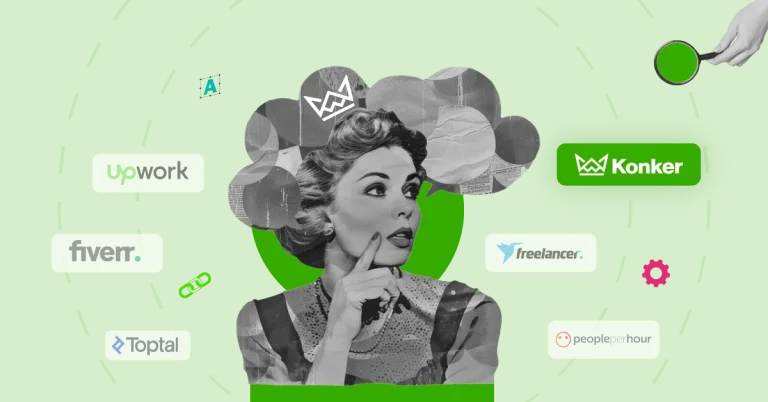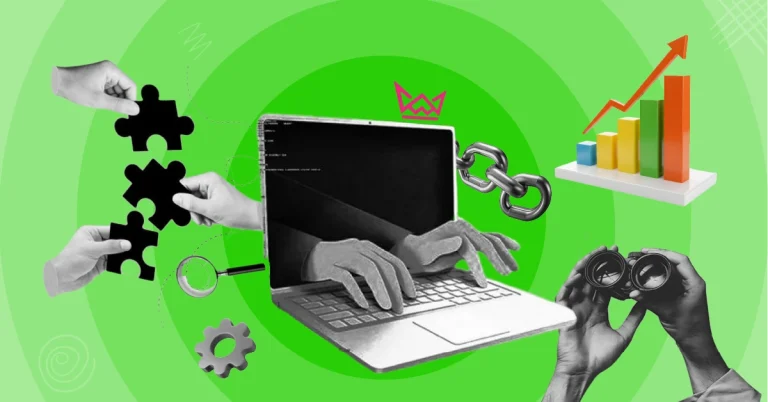Freelance digital marketing has become more than just a side hustle — it’s a full-time career for thousands worldwide. If you’ve ever wondered how some folks manage to work from cafés, coworking spaces, or even from different countries, chances are many of them are doing some form of freelance digital marketing.
But what is freelance digital marketing, really? Simply, it offers online marketing services to businesses or individuals without being tied to one company. You’re your boss, choosing the clients you want, setting your hours, and deciding how much you want to get paid.
If that sounds like something you’d love to do — this guide will walk you through everything you need to know. We’ve covered everything from getting started to finding clients, offering services, and setting your freelance rates.
What is Freelance Digital Marketing?
Freelance digital marketing is about helping businesses grow online — but instead of working in-house, you work independently. You take on projects or monthly contracts, offering services like social media management, SEO, content creation, and paid ads — often from the comfort of your home (or anywhere you like).
It’s different from a full-time digital marketing role in two significant ways:
- You choose your clients and workload.
- You get paid per project, hour, or on a retainer basis — not a monthly salary.
Businesses of all sizes — from solo entrepreneurs to e-commerce brands — rely on freelance marketers to run campaigns, optimize content, and generate leads. You don’t need to have a marketing degree or years of experience to get started. What matters is the value you can bring to the table.
So, freelance marketing can be flexible and rewarding if you’ve got digital skills and a bit of business sense.
Freelance Digital Marketing Services You Can Offer
There’s no one-size-fits-all when it comes to freelance digital marketing services. Depending on your strengths, you can specialize in one area or combine a few into a full-service offering. Here’s a closer look at what services you can offer — and what each means for your clients:
1. Search Engine Optimization (SEO)
SEO helps businesses get found on Google without paying for ads. As an SEO freelancer, you can work on:
- Keyword research to target what customers are searching for
- On-page optimization like improving titles, content, and metadata
- Link-building strategies to boost site authority
- Technical SEO audits to fix crawl errors, speed, or mobile usability issues
Clients love SEO because it brings long-term organic traffic without continuous ad spend.
2. Social Media Marketing
Most businesses know they need social media, but don’t have time to manage it. You can step in to:
- Create and schedule engaging content for platforms like Instagram, Facebook, LinkedIn, or TikTok
- Plan and run paid ad campaigns to reach new audiences
- Monitor engagement and build community through comments and messages
- Use insights and analytics to improve performance
This service works great for creative freelancers who enjoy visuals, trends, and fast-paced platforms.
3. Content Marketing
Content isn’t just about writing — it’s about strategy. As a content marketer, you can help brands:
- Create blog posts, landing pages, or guides that drive traffic
- Build content calendars based on SEO and audience intent
- Repurpose content across formats — blogs into videos, or podcasts into articles
- Measure engagement and conversions to fine-tune their approach
Strong content helps businesses educate, attract, and convert users — which makes it a must-have.
4. Email Marketing
Email remains one of the most cost-effective digital marketing tools. You can offer services like:
- Writing and designing email newsletters
- Setting up welcome sequences, cart abandonment flows, or promotional blasts
- A/B testing subject lines and content for better open and click rates
- Managing tools like Mailchimp, Klaviyo, or ConvertKit
If you’re good with words and love testing what works, this is a high-retention service to offer.
5. Pay-Per-Click (PPC) Advertising
Paid advertising gives instant results when done right. As a PPC freelancer, you can:
- Set up Google Ads or Facebook/Instagram ad campaigns
- Choose keywords, write ad copy, and manage budgets
- Track conversions and return on ad spend (ROAS)
- Adjust targeting, bids, and creatives based on results
Many businesses struggle to manage ads effectively — so if you’re analytical, this can be a high-value service.
6. Analytics & Reporting
Clients want to see results. You can help them track performance by:
- Setting up and reading Google Analytics or GA4
- Building dashboards or monthly reports
- Identifying what’s driving traffic or conversions
- Suggesting data-backed next steps
Being able to interpret data sets you apart — it shows clients where their money is working and where it isn’t.
You don’t need to offer everything at once. Start with 1–2 services you’re confident in and expand as you go. Many freelancers become specialists over time, leading to higher rates and more targeted clients.
How to Get Started with Freelance Digital Marketing
If you’re asking yourself how to get started with freelance digital marketing, you’re not alone — this is where most people pause. The truth? You don’t need a degree, years of experience, or a big budget. You need a clear plan and a willingness to learn on the go.
Here’s a step-by-step approach to help you start strong:
1. Learn the Fundamentals
Start by picking one or two digital marketing areas — like SEO, social media, or content marketing — and go deep.
- Use free resources like Google’s Digital Garage, HubSpot Academy, and YouTube
- Take a paid course if you want structured learning (Udemy, Coursera, etc.)
- Focus more on doing than just learning — practice as you go
2. Build Your Portfolio
Clients will want to see proof of your skills, even if it’s not client work.
- Create mock projects: write blog posts, design a sample Instagram strategy, or set up a Google Ads demo
- Volunteer for a local business or nonprofit in exchange for testimonials
- Document your results and process — that’s what helps you stand out
3. Set Up Your Online Presence
You don’t need a full-blown website on Day 1, but you should be visible online.
- Create a professional LinkedIn profile with your services clearly listed
- Set up a simple portfolio site (use tools like Notion, Wix, or Carrd)
- Join freelancing platforms like Upwork, Fiverr, Konker, or Freelancer
4. Choose Your Services and Pricing
Don’t offer everything. Start with 1–2 services you’re confident in and grow from there.
- Research market rates and start competitively — but don’t undercharge
- Choose between hourly, per-project, or monthly retainers depending on the service
5. Start Finding Clients
You don’t have to wait for clients to come to you.
- Reach out to small businesses that need help (even locally)
- Share helpful content on LinkedIn to showcase your knowledge
- Pitch to leads on platforms like Konker or job boards like ProBlogger and PeoplePerHour
Getting started feels overwhelming at first, but once you land that first client, everything starts to feel real. Start small, stay consistent, and don’t stop improving.
How to Become a Freelance Digital Marketer (Step-by-Step)
Becoming a successful freelance digital marketer isn’t about luck but building the right skills, systems, and habits. If you’re serious about making a career out of it, follow these simple but practical steps:
Step 1: Choose Your Service Niche
Don’t try to do it all. Start with one area of digital marketing — maybe SEO, social media, or content writing.
- Pick what you enjoy and have some knowledge about
- Look for demand in the market by browsing freelance job boards
- Over time, you can add more services or go deep into one area
Step 2: Define Your Offer and Pricing
Decide what exactly you’ll deliver and at what price—clarity matters.
- Will you charge hourly, per project, or monthly retainer?
- Create 2–3 pricing packages to give clients easy options
- Factor in your time, effort, and the value you’re providing — don’t undersell
Step 3: Set Up a Basic Brand Presence
Even as a freelancer, you’re still a brand.
- Come up with a name (your own or a brand name)
- Design a simple logo and portfolio (tools like Canva and Notion help)
- Make sure your LinkedIn, email, and freelance profiles are professional and aligned.
Step 4: Start Getting Clients
You don’t need fancy ads — you need conversations.
- Reach out to potential clients through LinkedIn, cold emails, or referrals
- Offer free mini audits or consultations to build trust
- List your services on platforms like Konker, Fiverr, or Upwork to get discovered
Step 5: Deliver Great Results & Ask for Testimonials
The easiest way to grow is by doing great work.
- Consistently deliver on time and communicate regularly
- Share updates and performance results with clients
- Ask for a testimonial or case study when the project ends — it helps win your next client faster
This path doesn’t need perfection — it requires action. Start with a tiny step and keep building. That’s how you become a freelance digital marketer clients trust and recommend.
Freelance Digital Marketing Salary: What Can You Expect?
One of the biggest perks of going freelance is control, including how much you earn. There’s no fixed freelance digital marketing salary — it depends on your skills, services, clients, and pricing model. But here’s what you can realistically expect.
Entry-Level Freelancers (0–1 year)
- Hourly Rate: $10 – $25
- Monthly Income: $500 – $2,000
- You may start low, especially on platforms like Fiverr or Upwork, but this stage helps you build your portfolio and gain experience.
Mid-Level Freelancers (1–3 years)
- Hourly Rate: $30 – $60
- Monthly Income: $2,500 – $5,000+
- At this point, you’re confident in your work, charging better rates and landing repeat clients—many transition to retainer contracts for stable income.
Experienced Freelancers (3+ years)
- Hourly Rate: $75 – $150+
- Monthly Income: $6,000 – $10,000+
- With a strong reputation, niche expertise, and referrals, high-performing freelancers earn six figures annually — especially those offering results-driven services like PPC or funnel optimization.
Factors That Influence Your Earnings
- Location: Freelancers in the U.S., UK, and Australia often charge more than those in Asia or Eastern Europe.
- Niche: Services like SEO audits, funnel design, and paid ad management bring higher pay than basic content writing or posting on social media.
- Client Type: Startups and local businesses pay less than large agencies or funded companies.
- Work Model: Offering retainers (monthly contracts) creates more consistent and predictable income
So, how much you make isn’t capped by a job description — it’s shaped by how you position yourself, the results you deliver, and the relationships you build.
Tips to Succeed as a Freelance Digital Marketer
Success in freelance digital marketing isn’t just about knowing SEO or running ads. It’s about working, communicating, managing time, and staying ahead of the curve. Here are some practical tips to help you thrive in this space:
1. Treat It Like a Business
Freelancing isn’t a side gig if you want consistent income — it’s a business.
- Set clear working hours
- Use contracts for every project
- Track income, expenses, and deadlines professionally
2. Build Long-Term Client Relationships
A happy client is easier to retain than finding a new one.
- Offer regular performance updates and quick responses
- Suggest new ideas or opportunities without being asked
- Offer retainers or monthly packages to create stable income
3. Stay Updated With Trends and Tools
Digital marketing changes fast.
- Follow blogs like Search Engine Journal, HubSpot, and Social Media Examiner
- Try new tools like Surfer SEO, Jasper AI, or Notion for workflow
- Learn to adapt when algorithms or platforms change
4. Specialize to Stand Out
Generalists can get work, but specialists often get paid more.
- Pick a niche like e-commerce SEO or Instagram for coaches
- Tailor your offers, content, and case studies around that niche
- Become the go-to freelancer for that service
5. Ask for Reviews and Referrals
Word-of-mouth can keep your calendar booked.
- After a successful project, ask clients for testimonials
- Let them know you’re open to referrals
- Feature reviews on your website or LinkedIn profile
6. Don’t Burn Out
Burnout is common among freelancers who try to do everything.
- Schedule breaks and set realistic work limits
- Don’t take on every client — say no when needed
- Use tools like Trello or ClickUp to stay organized
Success takes time — but these small habits build a strong foundation. Show up consistently, do good work, and keep improving. That’s what sets the best freelancers apart.
Find Freelance Digital Marketing Gigs on Konker
If you’re just starting or looking to scale your freelance work, Konker is one of the easiest platforms to get noticed. It connects freelancers directly with clients actively looking for marketing help — no long proposals, no endless bidding.
You can list your freelance digital marketing services across categories like SEO, social media, email marketing, content creation, and more. Whether you’re building your portfolio or already have a few clients, Konker gives you a marketplace where your skills speak louder than a resume.
So if you’re ready to turn your digital marketing skills into real income, check out Konker’s Marketing section.
Conclusion
Freelance digital marketing is more than a flexible way to work — it’s a real, scalable career that gives you control over your time, income, and work type. You don’t need a fancy degree or a huge following to start. You need the willingness to learn, the drive to show up, and the patience to build something from scratch.
Whether you want to start part-time or go all-in, the path is wide open. Choose your services, build your presence, deliver great work, and keep learning. Over time, you’ll find your rhythm — and clients who trust and value what you bring to the table.
So if you’re still wondering how to get started with freelance digital marketing, the answer is simple: just start.







Leave a Comment